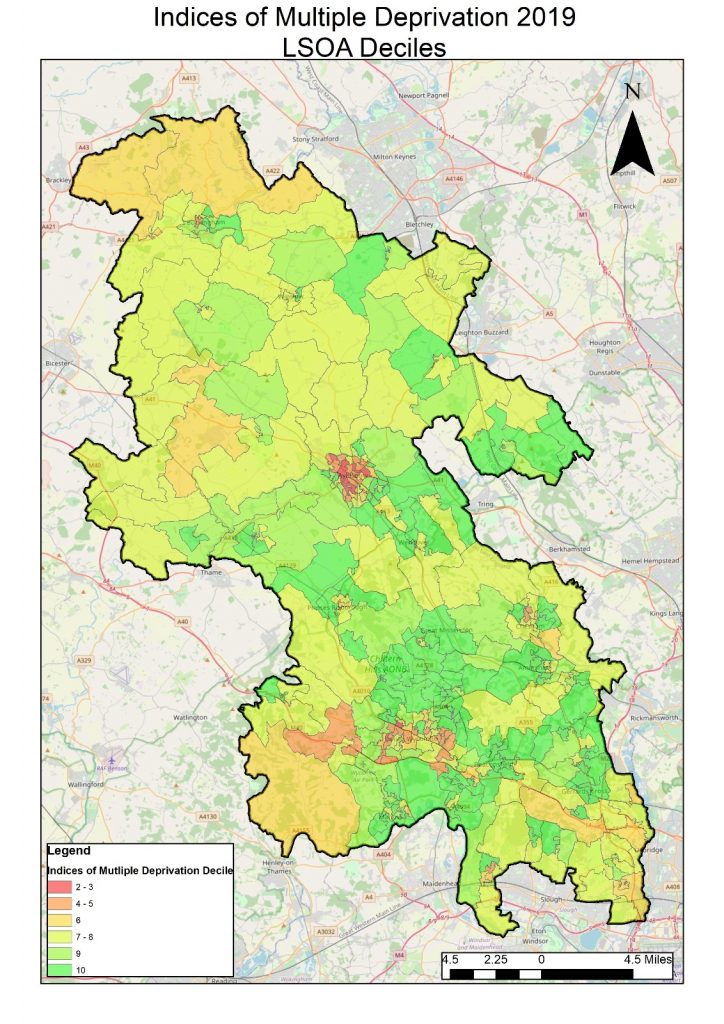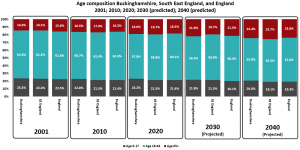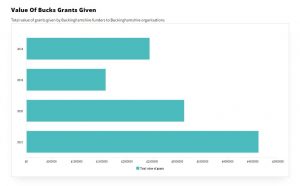This indicator outlines the ‘smaller’ boundaries within Buckinghamshire which are deprived across a range of factors beyond low income. The IMD is also relative to the rest of England so it’s powerful in highlighting key areas of deprivation within Buckinghamshire, which is typically seen as an affluent county. The map shows pockets of deprivation in Aylesbury and High Wycombe.
At aggregate level, Buckinghamshire’s deprivation levels are low. With a 2019 Index of Multiple Deprivation (IMD) deprivation score of 10.1, Buckinghamshire is deemed the least deprived LEP area in England. This compares to a score of 15.5 for the South East and 21.8 for England.
7 domains of deprivation
Percentage weighting of data into the indices ranking
- Income – 22.5%
- Employment – 22.5%
- Education – 13.5%
- Health – 13.5%
- Crime – 9.3%
- Barriers to Housing & Services – 9.3%
- Living Environment – 9.3%













